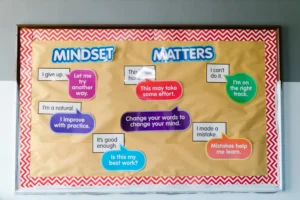If you don’t follow up, you’re going to miss out on mountains of opportunities in business.
I’m talking high paying clients, lucrative careers, mentors, and more.
People are busy.
They aren’t always going to be able to respond to a single email.
This is why you NEED to start following up more with leads, job opportunities, etc.
It’s been found that you need to follow up five times to land a sale. How many times are you doing it?
If you said none, then Houston, we have a problem.
But don’t worry.
Today I’m going to teach you how to properly follow up via email, share templates with you, and offer tips for different types of followups.
Let’s get into it!
Follow up email subject lines
One of the most important parts of an email is the subject line.
Most people will open or delete an email based on the subject line alone.
That means if yours is boring, vague, or generic, it’s going to end up in the trash 🙁
Here are some follow email subject lines that you should test to see which delivers the best open and reply rates.
Address them by name
It’s been proven that when you use someone’s first name, it gains their attention quickly.
Why is this?
Because our names mean a lot to us. There have been studies that show using a lead’s name in the subject will boost open rates.
When we hear our name, it makes the interaction much more personal and casual.
The subject line can be as simple as:
- To {Name}
- Hey {Name}
- Quick question, {Name}
I’ve personally found this to have the highest open rate out of all of the subject lines I have tested in various campaigns.
Keep it short and sweet
Whether you email your boss, a VP of marketing, or someone from a conference you met over coffee, you need to keep it short.
People, especially in high positions, value their time and have lots of things to do.
Show that you care about their time and energy by keeping subject lines as short as possible.
Six to ten words tends to be a good amount.
This is because 56% of people open email on mobile devices, meaning long subject lines will get cut off.
Use a friendly and conversational tone
Throughout the entire email, and especially the subject line, use a casual tone that sounds like you’re speaking with a friend.
If your email subject sounds too sales focused or robotic, people may not respond to it as well as you’d like them to.
Being friendly will make them feel at ease, and more likely to open your email and engage in conversation.
Follow up email templates
Here are some follow up email examples and templates you can customize yourself:
Hey {First name},
Would there be a good time to hop on the phone this week to chat about {Subject} for {Company name}?
You can see some available times or me at {Calendar link}.
Warm regards,
{Your name}
Hey {First name},
I’m sure you get a heap of emails, so I’m just following up to see if you got my last message.
{Re-explain your selling proposition in one sentence}.
Warm regards,
{Your name}
Hey {First name},
I noticed that your competitor {Competitor name} has been using {Strategy} to generate {Results}.
{Your company name} helps businesses generate {Results}. Do you currently need any help with {Subject}?
Warm regards,
{Your name}
Follow up email strategies
Emailing requires you to use effective strategies, otherwise you won’t get the results you’re after.
The following are simple email tactics you can use in your followups to ramp up response rates.
Calls to action
Your emails need to lead somewhere.
Maybe it’s a phone call, meeting, or other step in the sales process.
It depends on who you’re speaking with and for what reason.
For example, if you’re pitching a new B2B lead for social media services, you can use a call to action to:
- Get them on a discovery call.
- Have them sign up for a free month of your services.
- Ask what’s a good time in their schedule to meet up.
But the call to action would be very different for someone you met at a networking event, including:
- Asking for more information about their business.
- Inviting them to attend a mastermind group or future networking event.
- Propose a project you’d like to work on together.
Show you’ve done your research
Businesses get tons of unsolicited emails every day.
That means most of them will end up in the trash and never considered seriously.
However, if you show that you’ve done your research, it will make you stand out like a sore thumb in a good way.
It also shows that you did your due diligence, which makes for a good business partner.
For example, if you offer SEO services, you might mention that you noticed a lead has the opportunity to rank for specific keywords, has a certain amount of organic traffic, or other metrics.
Once again, it displays that you’ve analyzed the company and aren’t sending a copy and pasted email.
Send emails at the right time and day
Did you know that when you send follow up emails can have a drastic impact on they are received?
This is because people are only in the office for certain hours on a typical basis.
Think about it.
If you email someone on Monday morning, they’re going to have a pile of work and other emails to tend to first before yours.
This is why it makes sense to send your follow up emails:
- Before 9:00AM or past 5:00PM to ensure that you’re at the top of the inbox when they get to the office.
- On every day but Monday, Friday, and Saturday since Monday’s will be the busiest and emails aren’t typically checked on weekends.
Final thoughts on follow up emails
Following up on your emails is mandatory if you want to land more clients and life opportunities.
Follow up emails can be used with individuals you’ve networked with, leads, potential mentors, employers, colleagues, and anyone else.
The key is to keep it personal, customize each message, and email at strategic times.
What’s your #1 email follow up tip?














